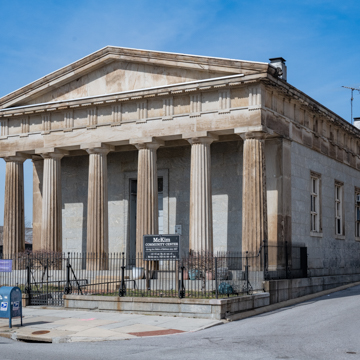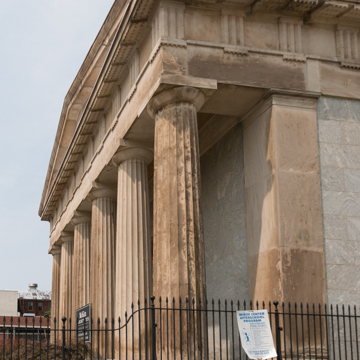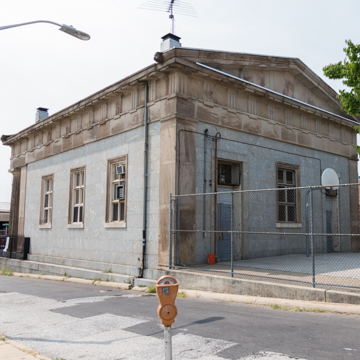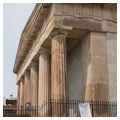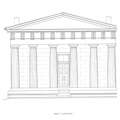Built through an endowment from Quaker cotton merchant John McKim, this is among the first and most archaeologically correct examples of the Greek Temple form in Baltimore. The design for the granite building with its monolithic Doric columns was derived from the Temple of Athena and Hephaestus in Athens and the north wing of the Acropolis’s Propylaea. Small and Howard likely referred to James Stuart and Nicholas Revett’s influential publication Antiquities of Athens of 1762. As symbolic of a nation founded on democratic principles, the Greek Temple was deemed an appropriate model for Baltimore’s first school directed toward free public education. The realization of John McKim’s vision for the education of indigent immigrant youth, it became the model for the city’s Public School buildings No. 1 through No. 4 (no longer extant). In the post-Civil War era, it was supplanted by the public school system, becoming the city’s first free kindergarten. In 1945, in partnership with the Society of Friends, it was adapted for reuse as the McKim Community Center featuring youth training, athletic programs, and community outreach.
References
Alexander, Robert L. “William F. Small, ‘Architect of the City.” Journal of the Society of Architectural Historians 20, no. 2 (May 1961): 63-77.
Dilts, James D., and John Dorsey. A Guide to Baltimore Architecture. 3rd ed. Centreville, MD: Tidewater Publishers, 1997.
Hayward, Mary Ellen, and Frank R. Shivers, Jr. The Architecture of Baltimore: An Illustrated History. Baltimore: Johns Hopkins University Press, 2004.
“McKim Free School,” HABS No. MD-305, Historic American Buildings Survey, National Park Service, 1967. Prints and Photographs Division, Library of Congress, Washington, DC.
Townsend, Arthur. “The McKim’s School,” Baltimore County, Maryland. National Register of Historic Places Nomination Form, 1972. National Park Service, U.S. Department of the Interior, Washington, D.C.



